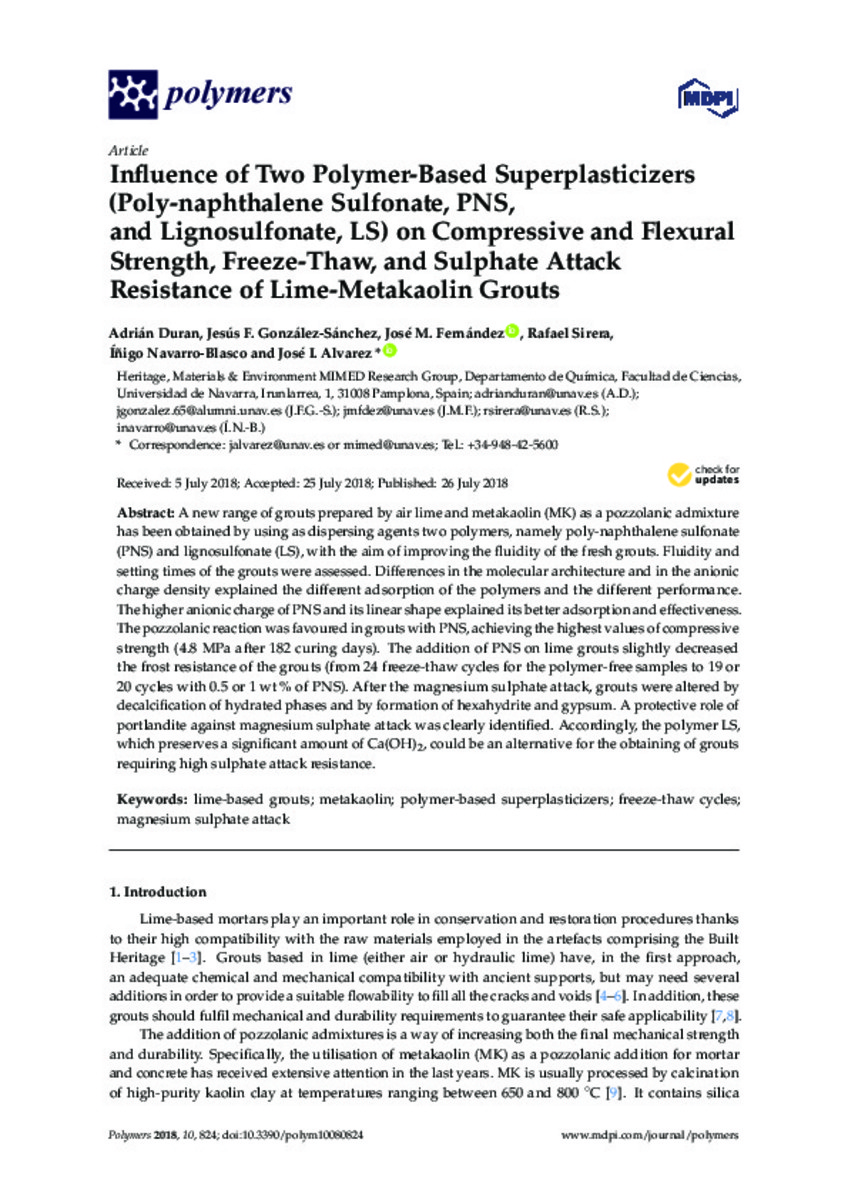Influence of two polymer-based superplasticizers (poly-naphthalene sulfonate, PNS, and lignosulfonate, LS) on compressive and flexural strength, freeze-thaw, and sulphate attack resistance of lime-metakaolin grouts
Keywords:
Lime-based grouts
Metakaolin
Polymer-based superplasticizers
Freeze-thaw cycles
Magnesium sulphate attack
Editorial note:
From the January 2016 issue, MDPI journals will use article numbers in place of the traditional method of continuous pagination through the volume. This step helps us to maintain a rapid, efficient production process by being able to define pagination as soon as a paper is accepted. We have recently made a number of improvements to article layout and production procedures, of which article numbers is just one component. You can read more about the changes at http://blog.mdpi.com/2015/12/01/a-new-look-for-mdpi-papers/. For papers that use article numbers the page number will start from 1 and the citation needs only list the article number, e.g., Holmes, L.; LaHurd, A.; Wasson, E.; McClarin, L.; Dabney, K. Racial and Ethnic Heterogeneity in the Association Between Total Cholesterol and Pediatric Obesity. Int. J. Environ. Res. Public Health 2016, 13, 19 (article number: 19. http://www.mdpi.com/1660-4601/13/1/19).
Citation:
Duran A, Gonzalez-Sanchez JF, Fernández JM, Sirera R, Navarro-Blasco I, Álvarez JI. Influence of Two Polymer-Based Superplasticizers (Poly-naphthalene Sulfonate, PNS, and Lignosulfonate, LS) on Compressive and Flexural Strength, Freeze-Thaw, and Sulphate Attack Resistance of Lime-Metakaolin Grouts. Polymers 2018; 10(8): 824
Statistics and impact
0 citas en

0 citas en

Items in Dadun are protected by copyright, with all rights reserved, unless otherwise indicated.











